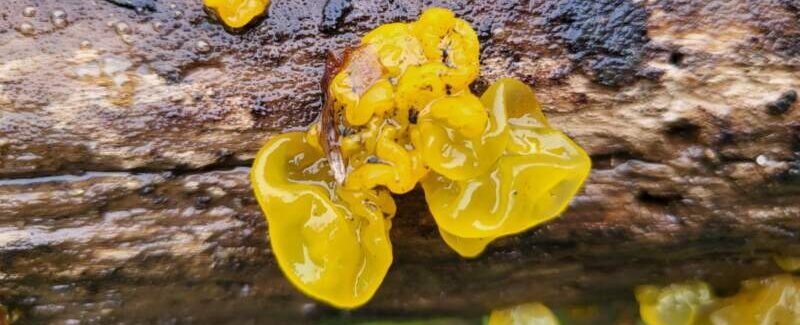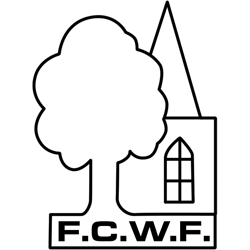There have been trees on the site of Childwall Woods for over 3 centuries, some planted by the owners of Childwall Hall but many occurring naturally and maturing through the centuries into the stunning veteran trees that we see today.
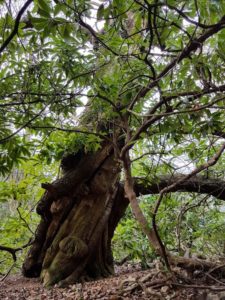
Veteran Trees are very old trees for their species and are showing signs of damage and decay. But they are also the tallest and widest in our woods and create unique environments for insects, fungi, birds, animals and plants. These wonderful veteran trees, are the ancient trees of tomorrow and enrich the wildlife and diversity of the woods.
The Ancient Tree Inventory maps the oldest and most important trees in the UK, and Childwall Woods has more Veteran Trees listed on it than anywhere else in Liverpool. It is important to recognise and protect these beautiful trees so that they can go on to become ancient trees and continue to provide the essential habitats for the health of the woods and its wildlife.
What is an Ancient Tree?
Ancient Trees are trees that are very old for their species. Some species of tree such as yew, may live up to 600 years and sometimes more, whereas a fast-growing beech tree will not be expected to live past 250-300 years. Each species can be classified as ancient when it is in the final stage of its life and is displaying ancient characteristics.
Ancient Characteristics
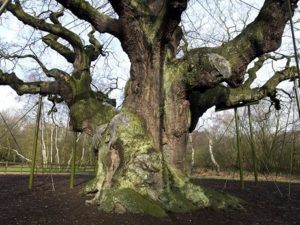
The Major Oak, Sherwood Forest. Woodland Trust WTML
Ancient trees are recognisable by the amount of decay and damage that they have suffered throughout their lives. They will have lost branches from their canopy and are no longer as tall or wide as they were. Through the years their trunks become shorter and their girth larger, with deep crevices, hollows and holes, and many twisted and dead branches.
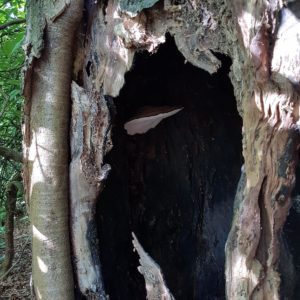
Often you will find fungus growing out of the trunk indicating decay of the heartwood or sometimes the heartwood has gone leaving the tree trunk completely hollow. There may be pools of water collecting at the roots and hollows in the crown and many holes where branches once grew. All of these characteristics provide a wonderfully unique environment for insects, birds, bats, squirrels etc and make the ancient tree an important and unique environment.
A Veteran tree is on its way to becoming ancient. It will have many ancient characteristics but not yet the wide girth and not extensively damaged or hollowed as it will become, yet recognisable as a special tree providing a unique environment that’s so important to woodland life.
Below is a map of our 16 trees that have been newly listed on the Ancient Tree Inventory. By clicking on each one you can see the beauty that nature carves into the trees through time, giving each one an individual character and raising their importance in supporting woodland life by the individual and unique habits they create.
The 24 Veteran Trees of Childwall Woods.
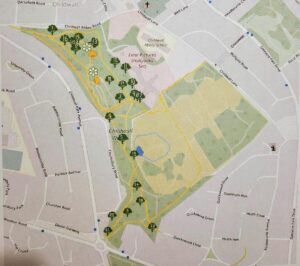
Click on a tree below for photos and information.
Tree 1 – Sw Chestnut – Girth 366cm
Tree 2 – Beech – Girth: 357 cm
Tree 6 – Beech – Girth: 457 cm
Tree 7 – Sw Chestnut – Girth: 460cm
Tree 8 – Sw Chestnut – Girth: 367cm
Tree 9 – Sw Chestnut – Girth: 350cm
Tree 10 -Sw Chestnut – Girth: 383cm
Tree 11 – Sw Chestnut – Girth: 351cm
Tree 13 – Sw Chestnut – Girth:
Tree 14 – Beech – Girth: 384cm
Tree 15 – Beech – Girth: 353cm
Tree 16 – Sw Chestnut- Girth: 380cm
Tree 17 – Beech – Girth: 405cm
B Cameron
